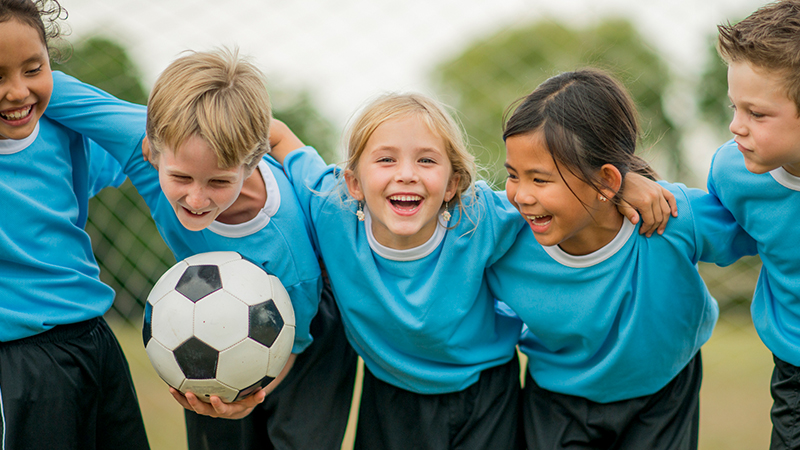May is National Physical Fitness and Sport Month, and we can think of no better way to celebrate than to showcase the Sport Education Model.
Sport education is about more than mastering physical skills; it’s about understanding the rules of the game and how to follow them, collaborating and cooperating with teammates, keeping score, developing strategies, displaying sportsmanship, and developing a love of physical activity.
Sport Education Model
Motivating students in sports and PE can be a challenge, especially when students don’t believe that they are athletically gifted. One way to engage your diverse learners is through the Sport Education Model. This teaching technique engages students in all aspects of a sports season, not just in playing the game. It also shifts the focus from the teacher to the students. Students own the entire process, from conducting practices, running teams, officiating games, and keeping score.
Below are a few tips from physical education expert, Daryl Siedentop, to consider when using the Sport Education Model to create your sport season:
Seasons instead of units Seasons typically last a minimum of 12 classes. This will give students time to learn, practice, and show growth in the sport. The season will begin with a teacher-led lesson in which you explain the sport and the rules of the game. After students have a basic understanding of how to play the game, you will announce the teams and student roles for the season.
Teams and Roles
Students become members of mixed-ability teams. These rosters stay the same throughout the season. Captains and coaches are in charge of running their teams, organizing practices, and helping their teammates learn the necessary skills to excel in the sport. As the teacher, you can choose to interject as much or as little as you think is necessary. You can also schedule scrimmages if you think players need more game-related practice before the formal competition begins.
Formal Competition
Sports seasons include formal schedules that you, the teacher, create. Typically, games are interspersed with practices.
Keeping Records
Records are publicized and are used to provide feedback, define standards, and establish goals for players and teams.
Culminating Event
A competitive event highlights the season and provides an end goal for teams to work towards. A great way to engage all teams in this event is through a tournament in which winning teams continue on until competing in a final championship game. Players from teams that are eliminated early can take on the role of referees, scorekeepers, statisticians, announcers, etc.
Festivity
Get your students excited about the sport! If possible, encourage the school community to attend the final tournament, include the season as part of morning school announcements, and print recaps and team interviews in the school newspaper.
Selecting Student Roles
It’s important to give students opportunities to try a variety of roles. For instance, a student shouldn’t only officiate the games. Also, students can have more than one role (e.g., the team captain can also be a field coordinator). Think of your students’ gifts and passions when you create roles.
Student Roles in the Sport Education Model
Coach
The coach organizes and runs team practices, chooses whom to put in the game and in what position, makes substitutions during the games, calls timeouts, and organizes plays and game strategies.
Team Captain
The captain is in charge of leading the team both on and off the court/field. The captain has a particularly important role of leading by example when it comes to sportsmanship, etiquette, and being a team player. He/she is also the coach’s right-hand person.
Referee
This person officiates games and knows the rules and etiquette of the sport.
Timekeeper/Scorekeeper
This person manages the clock during the game—including the game-stopping buzzer—and is in charge of keeping score.
Less Traditional Roles
Statisticians
Who says sports don’t involve brains? Statisticians collect player data to show each player’s progress and successes. This can include statistics charts that show percentages, participation, etc. The statistician can also provide you with an excellent tool for formatively assessing your students.
Media Team
The media team can consist of videographers, game announcers, music managers, and halftime show managers.
Publicity Managers
This team is in charge of getting the word out to the school about the sporting event, players, and coaches. This can involve conducting interviews with players after the game, collecting quotes from coaches about game-time decisions, writing recap articles, and creating and posting fliers and social media posts.
Equipment and Field Coordinators
This team is in charge of reserving field space, maintaining the fields to ensure they are in playable condition, and distributing and collecting equipment.
Assigning roles allows your students to showcase their unique talents while learning new skills (e.g., an art guru will love creating fliers for the games while also learning how to think strategically on the field). These are only a few examples of the unique roles you can assign. Think outside of the box to engage all of your students’ passions!







